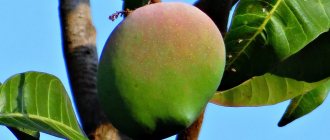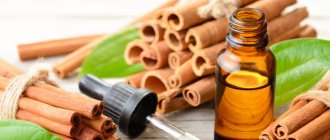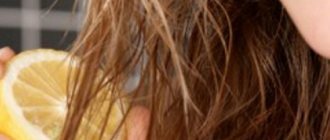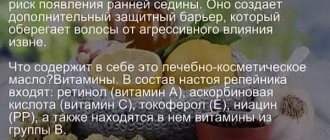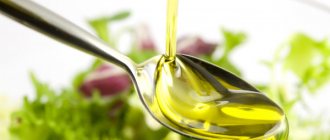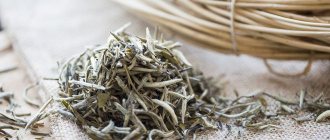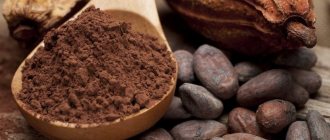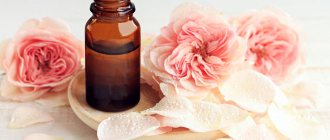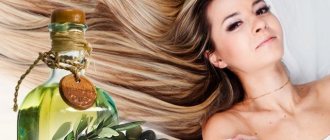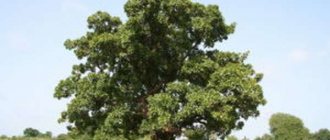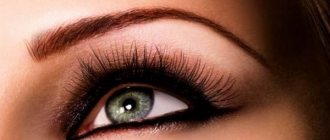Types of cocoa butter
Unrefined cocoa butter
In other words, this is cold-pressed oil that has not undergone further processing, which is how it is obtained from cocoa beans. It is a brown liquid with a pleasant characteristic odor of cocoa. The oil has a very large amount of nutrients. In cosmetology it is recommended to use this type of cocoa butter.
Deodorized cocoa butter
Once extracted from the cocoa beans, the cocoa butter is deodorized to reduce the strong natural chocolate odor. As a result, the product has a more delicate aroma than unrefined cocoa butter. Deodorized cocoa butter has the same specific chocolate smell, but is not so strong and has less effect on the final result.
Deodorized cocoa butter is pale yellow or light brownish in color.
Refined cocoa butter
Refined cocoa butter goes through special purification. It is softer and more delicate, lighter in color than unrefined oil, odorless, and has a longer shelf life.
Cocoa butter
Lump cocoa butter has an even light yellow color, without foreign impurities or odors. This butter is made by pressing cocoa beans with a special heavy press. Next, the oil is heated to 32 degrees Celsius, after which it melts.
Cocoa butter cream
Cocoa butter can be successfully added to various creams, which enhances the nutritional and moisturizing properties of the original product.
Cacao butter
Cocoa butter is distinguished not only by its excellent taste
: it is very nutritious, healthy and healing - since ancient times it has been used not only in cooking and cosmetology, but also many diseases have been treated with its help, using it both externally and internally.
Cosmetologists love this oil very much, and they say that only shea butter can be called more effective, since ancient times it has helped women prolong youth and preserve beauty.
People are used to calling the seeds of the chocolate tree cocoa beans, although this is not entirely correct - but for some reason the name stuck. First, the seeds must undergo a fermentation process - this is called soaking in special tanks, after which the pulp is easier to separate from the shells. Fermented seeds are dried and fried - the shell becomes fragile and is removed, and the seeds are crushed and oil is extracted from them using the hot pressing method. The oil is immediately filtered, and then poured into molds, and then it hardens: it becomes a fairly solid substance of light yellow color, with a pleasant subtle smell of chocolate. At room temperature (at least 18°C) cocoa butter is always solid, but it melts easily and quickly - you just need to heat it to 30-40°C, so storing it and then using it for cosmetic and medicinal purposes is very comfortable.
Vegetable diet for weight loss
Indications for use
Cocoa butter has been successfully used for cellulite.
You can use cocoa bean oil for the skin of the body; it perfectly moisturizes and softens, gives the skin firmness, smoothness, elasticity, and saturates it with nutrients.
Chemical composition, scope
Cocoa butter is not only a fatty base for making chocolate bars and candies (by the way, by the cost of confectionery products it is easy to determine whether they contain natural cocoa butter or not - sweets with cocoa butter cannot be cheap), it is also an indispensable component in the perfumery and pharmaceutical business.
This oil is used as a base for medical suppositories - laxatives and analgesic suppositories, ointments.
It contains a large amount of fatty acids: linoleic, palmitic, stearic, oleic and others, as well as glycerol esters - triglycerides.
Thanks to the concentration and variety of components, cocoa butter has regenerating, anti-inflammatory, moisturizing, nourishing, protective and other beneficial properties.
Methods of use for stretch marks
Cocoa butter contains fatty acids that fight stretch marks and make them less noticeable. The product can also be used during pregnancy, as during this time weight gain occurs and stretch marks appear. To combat stretch marks, oil can be used:
- In its purest form. The butter must first be melted in a water bath, since it initially has a solid structure. A few drops of oil are rubbed into problem areas with massage movements, this is done 1-2 times a day.
- Wraps. Mix 2 tbsp. l. cocoa butter with 2 tbsp. l. linseed oil, apply the mixture to problem areas for 20 minutes. Cover with film, then a blanket or blanket for 20–30 minutes. Take a warm shower. The session is carried out once a week.
Masks with a moisturizing effect
Moisturizing masks are designed to combat fatigue and dry skin.
Honey body masks are a universal remedy for solving this problem, since they can not only successfully solve the issue of seasonal dry skin, but also promote its full regeneration.
Honey contains a whole complex of elements valuable for the body, which, penetrating into the deep layers of the dermis, perfectly tone and moisturize the skin. The honey body mask is best suited for normal to combination skin types. For the basic mask 1 tbsp. A spoonful of honey melted in a water bath is mixed with 10 drops of lemon juice. The resulting paste is applied to the body, left for 20-30 minutes, then washed off with water.
Dairy products also have moisturizing and tonic properties. Masks based on kefir, yogurt and sour cream will help maintain the youth and healthy appearance of your body. As auxiliary components they can include: carrot or cucumber juice, raw egg white and lemon.
Massage tricks
Cocoa butter helps in the fight against red stretch marks that appear due to sudden weight gain. Mix the product in a 1:1 ratio with bergamot, cinnamon or lavender oil. Before the massage, prepare the skin by taking a warm shower or bath, as nutrients penetrate into open pores much more easily.
1. Classic (regular) massage, in which the composition is rubbed into the skin.
2. Pinch massage works better than classic massage; it is recommended for old stretch marks. The oil is driven into the skin. The massage therapist grabs and twists problem areas of the skin.
3. Cupping massage not only eliminates stretch marks, but also removes cellulite and tightens aging skin. The skin enters the jar, a vacuum is created, which improves fat and water metabolism and blood circulation.
Cocoa for cough for oral administration
There are several effective recipes for using the drug.
- When treating a cough, cocoa butter can be held in the mouth like candy and sucked several times a day. Using the product in its pure form eliminates sore throat and relieves coughing.
- The natural product is taken with warm milk. Melt one teaspoon of oil per glass of liquid in a water bath, add honey. Cough milk with cocoa butter is drunk from two to six glasses a day.
- Cocoa butter for coughs for children, melted with ¼ bar of chocolate and mixed with milk, is not only healthy, but also delicious. The prepared mixture is drunk two tablespoons several times a day after meals.
- The melted product is mixed with badger fat in equal proportions - one tablespoon at a time. Cool the mass and wait until it becomes solid. To add aroma, add a few drops of cocoa essential oil. The resulting drug is taken before meals, half a teaspoon. The product should not be used by people with diseases of the digestive system.
- The healing fat mass is mixed with propolis ointment 1:10. The drug is taken orally before meals, half a teaspoon three times a day.
Cocoa butter wraps
For this procedure, the product is enriched with any additional elements, since cocoa butter enhances its properties in combination with certain components:
- castor oil, olive oil, geranium oil, bergamot oil, jojoba oil (mix in a 1:1 ratio);
- seaweed, pre-steamed with warm water (add to oil, stir);
- pepper or cinnamon (add to oil, stir).
The skin is first cleaned with a scrub to remove dead particles, the composition is applied to problem areas and covered with a film, then with a blanket or blanket for 40–45 minutes, rinse off the residue with warm water. The procedure is effective in the treatment of stretch marks, as well as aging skin. The session is carried out 1-2 times a week.
Cocoa butter in cough treatment
For colds accompanied by cough, oil:
- accelerates the healing of damaged mucous membranes of the respiratory tract;
- improves the removal of mucus from the bronchi due to its expectorant effect;
- envelops and softens inflamed tissues, thereby reducing the intensity of pain;
- when applied externally (rubbing), it improves microcirculation in tissues, accelerating the elimination of pathogenic microorganisms and their waste products.
Cocoa butter has a dense texture, so before use it must be melted in a water bath
Oral preparations
Composition and beneficial properties
Cocoa butter is a natural product obtained from the beans of the chocolate tree. The product has found wide application in the confectionery industry, perfumery and cosmetology, and medicine. Vegetable fat serves as the basis for many ointments and suppositories produced by the pharmaceutical industry.
The oil has a white color, a hard, brittle texture and a strong chocolate smell. Solid at room temperature, the oil melts at 33–37 °C and melts on contact with the skin.
You can purchase the product in pharmacies, at specialized exhibitions, in stores or order online. However, before purchasing, be sure to read the instructions: some manufacturers produce the product exclusively for cosmetic purposes. This product should not be taken internally.
Contains natural product:
- oleic, lauric and palm acids;
- triglycerides;
- tannins;
- minerals;
- vitamins.
Cocoa butter contains vitamins A and E, ascorbic acid, which are powerful antioxidants, neutralize the negative effects of free radicals and slow down the aging process, activate the immune system
Cocoa butter has the following effects:
- enveloping and softening;
- regenerating (healing);
- immunostimulating;
- anti-inflammatory;
- pain reliever;
- expectorant (improves sputum discharge);
- antitussive (suppresses the cough reflex).
The antitussive effect of cocoa butter is due to the alkaloid theobromine, which is part of its composition, synthetic analogues of which are widely used in the treatment of cough accompanying bronchitis, bronchial asthma, and pulmonary hypertension.
